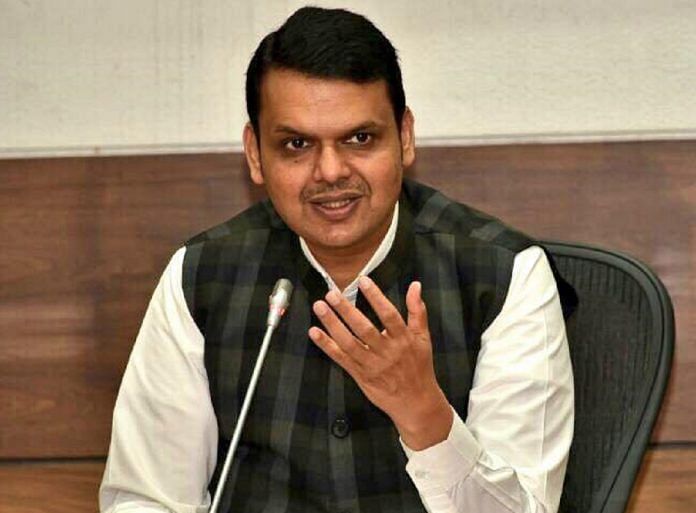The first station for Mumbai-Ahmedabad bullet train has been envisaged on the same plot set aside for the financial hub.
Mumbai: Three years ago, Maharashtra chief minister Devendra Fadnavis made the ambitious promise to build an International Financial Services Centre (IFSC) in Mumbai on the lines of London, Singapore and New York.
The project is yet to take shape, but the state government has not given up its plan to fashion Mumbai as a hub of international financial flows.
The main hurdles to the plan include the absence of permission from the Centre, and that an underground station for the proposed Mumbai-Ahmedabad bullet train has been envisaged on the same 30-hectare plot as that set aside for the IFSC.
To beat this, the CM-led Mumbai Metropolitan Region Development Authority (MMRDA) is having its own consultant design the bullet train station at Mumbai’s plush Bandra Kurla Complex in a way that it does not impede plans to construct an approximately 95-metre-tall building for the IFSC at the same spot.
Also read: Ahmedabad-Mumbai Bullet train construction will begin in 2019: Project chief
“The plan for an IFSC has not been shelved,” MMRDA metropolitan commissioner R.A. Rajeev said, “It is just on hold. At present, work on planning the bullet train station at Bandra Kurla Complex is underway and authorities in charge have agreed to give the job of designing the station to our consultant, keeping in mind the IFSC plans.”
Balancing the bullet train and IFSC
The union railway ministry had sought the plot for first station of the showpiece Mumbai-Ahmedabad bullet train.
Although the bullet train station is proposed to be built underground, and the Centre asked for just 0.9 hectares, government officials feared that related infrastructure such as parking will take up more space and disturb the design of the IFSC.
The bullet train station is proposed to be a three-storey underground structure with six platforms at the lowest level, the middle-level comprising shops, ticket counters and a food court, and the topmost level accommodating administrative facilities.
After much flip-flop, the Bharatiya Janata Party (BJP)-led Maharashtra government agreed last year to give the land, days before Prime Minister Narendra Modi was scheduled to lay the foundation stone for the project on 14 September.
Rajeev said the same entity that is designing the IFSC will plan the Bandra Kurla Complex bullet train station.
“It will be planned in such a way that it can accommodate a 95-metre-tall building on top for the IFSC,” he added. “The piers and beams (for the station) will be built in such a way that they don’t impede plans for a building above it,” he added.
The Maharashtra government is also yet to get the Centre’s special economic zone (SEZ) tag for the IFSC.
The minimum land requirement for a multi-speciality SEZ is 50 hectares, while the Mumbai IFSC is proposed on less than 30 hectares.
As a result, the MMRDA has submitted a proposal to the union government to allow it to show 50 hectares in built-up area instead of absolute area considering Mumbai’s space constraints.
The Centre’s approval, Rajeev said, was just a matter of time. The CM is confident about eventually getting it, he added.
The ambitious IFSC plan
In the 2005 union budget, then union finance minister P. Chidambaram had outlined plans for a regional financial centre in Mumbai.
A government-appointed panel under former World Bank official Percy Mistry recommended two years later that Mumbai be transformed into a global financial hub by 2020.
The concept, however, did not take off until 2015, when GIFT City, in Prime Minister Narendra Modi’s home state of Gujarat, got the Centre’s backing as the country’s first international financial centre.
Also read: Offshore funds want relaxed rules, tax sops to trade in Gift City
Fadnavis first planted dreams of a global finance centre in Mumbai in early 2015, around the same time as the official launch of GIFT City.
The state government has been pushing for the Bandra Kurla Complex to get the same concessions granted to GIFT City as an SEZ.
GIFT City, about 12 kilometres from the Ahmedabad international airport and eight kilometres from state capital Gandhinagar, is spread over 358.55 hectares, of which 105.62 hectares have been declared an SEZ area.
The government even pitched a ‘hub-and-spoke’ model for international financial centres in Mumbai and Gujarat, where the Bandra Kurla Complex can be the hub for major financial institutions, while they set up a larger base for more extensive activities in GIFT City.
The Fadnavis government set up a joint task force under Jayant Sinha, who was then the minister of state for finance, to steer Mumbai’s IFSC plans forward. However, the task force became defunct after Sinha’s portfolio changed in the 2016 Cabinet reshuffle.






